MusicRadar Verdict
If you're in the market for a high-quality, great-sounding digital piano for the home that's as close as you can get to the feel of an acoustic grand, we'd recommend the CLP-775 in a heartbeat.
Pros
- +
Superlative piano sounds
- +
Stunning to look at
- +
Touchscreen control
- +
Fantastic feel
- +
Bluetooth
Cons
- -
Heavy. Needs two people to assemble
MusicRadar's got your back
Yamaha Clavinova CLP-775 review: What is it?
Yamaha have been at the forefront of the home digital piano scene for decades now, with the earliest Clavinova models first appearing in the early 1980s - this writer's studio houses a CLP-360 model from 1990 that's still going strong, a testament to the quality and longevity of these instruments. Released in July 2020 and occupying an upper-mid slot in the current CLP-700 range, the CLP-775 is a compact console model that looks every inch the classic home piano, resembling a cut-down upright piano but sounding like a concert grand.
The test unit for this Yamaha Clavinova CLP-775 review was clad in a beautiful Dark Rosewood finish, but the 775 is also available in classic Polished Ebony, Black Walnut, Satin White, White Ash and Dark Walnut finishes.
The piano arrived in a large cardboard box and some self-assembly was required, taking two people around 30 minutes to unpack, assemble and screw together. Some suppliers may well ship readily-assembled instruments though, with delivery and setup included at extra cost, so check with your retailer to see whether your particular piano will require assembly. Full-size pianos are bulky items, and the 775 is no exception, weighing in at around 75 kilos.
Also in the box, alongside the user guide, you get a book of sheet music containing 50 classic piano pieces to learn (here’s 8 more classic piano songs for beginners). There's no piano stool included, so you'll need to source one of those separately.
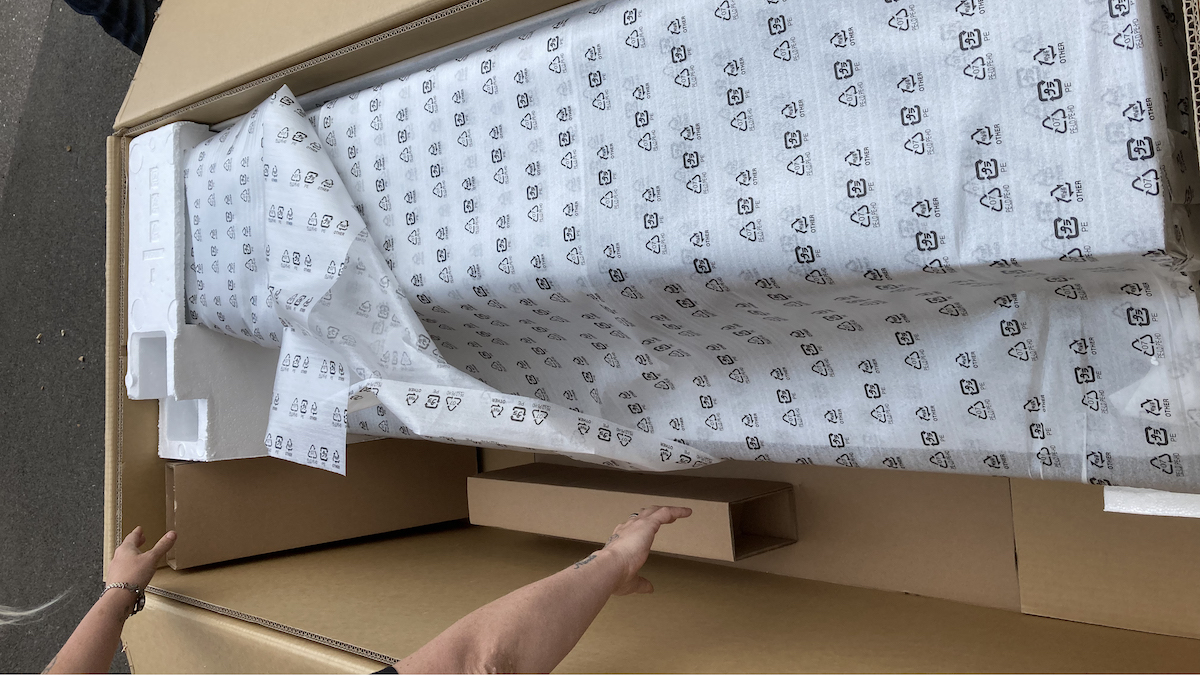
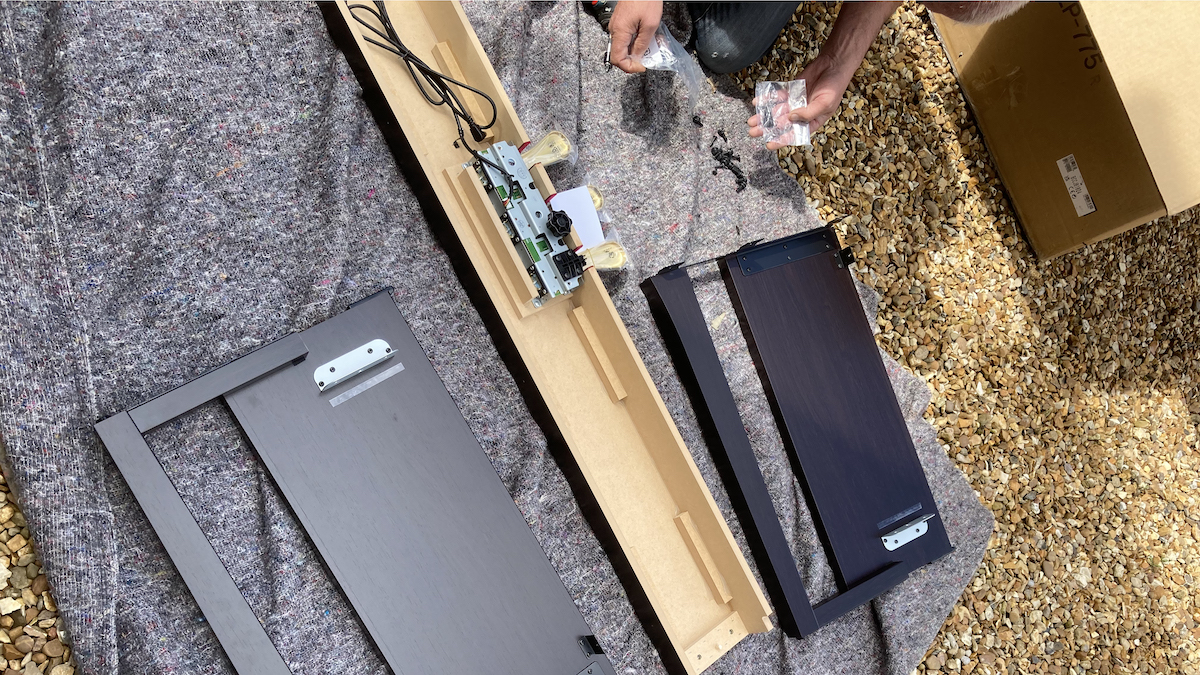
The CLP-775 boasts two headphone outputs, a big plus for student / teacher collaboration scenarios. These are concealed beneath the left-hand end of the keyboard along with two USB ports - a USB to host port that enables the piano to be used as a MIDI controller, and a USB A port for storage of audio recordings to a USB memory stick. The built-in pedalboard houses the requisite three-pedal setup of una corda, sostenuto and damper pedals needed for RSM Grade 5 and above, with the Grand Piano Response damper pedal designed to work and respond exactly like a grand piano pedal by supporting half-pedalling.
To the left of the keyboard is a touch-control display, which when dormant is completely invisible, giving the appearance of a plain, black panel which comes to life when tapped. This gives control over sound selection, rhythm and metronome access and more via a series of touch buttons. There's also a small dot-matrix backlit LCD screen that indicates the current sound selection and allows navigation of the various menus.
Yamaha Clavinova CLP-775 review: Performance & verdict
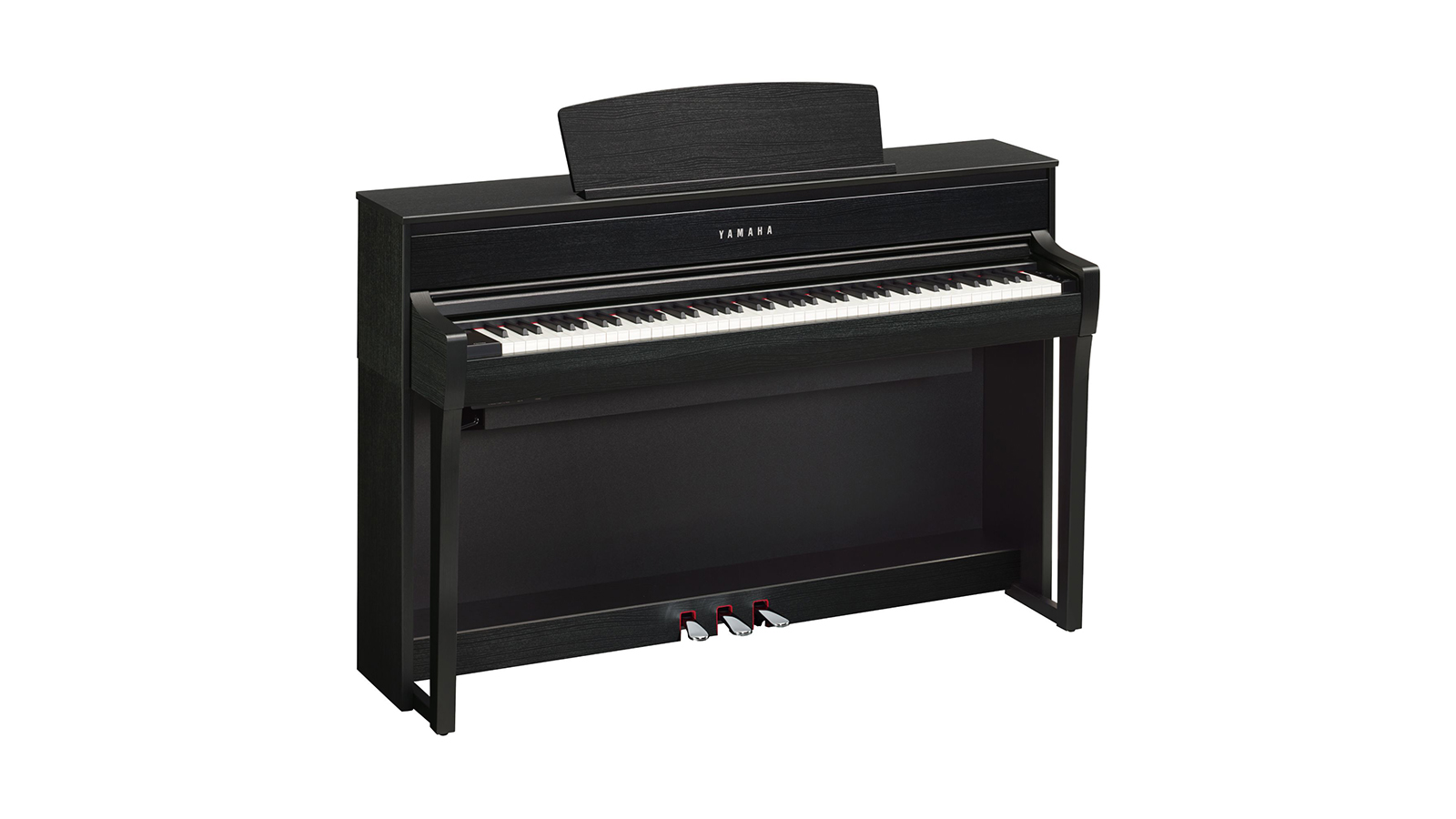
Once assembled, we slid back the CLP-775’s built-in keyboard cover and hit the 'on' button, and we were ready to start playing after a wake-up time of around 7 seconds. First impressions were that the keyboard action is very close to that of an acoustic piano, and the sound is, well, very close to that of an acoustic piano!
Want all the hottest music and gear news, reviews, deals, features and more, direct to your inbox? Sign up here.
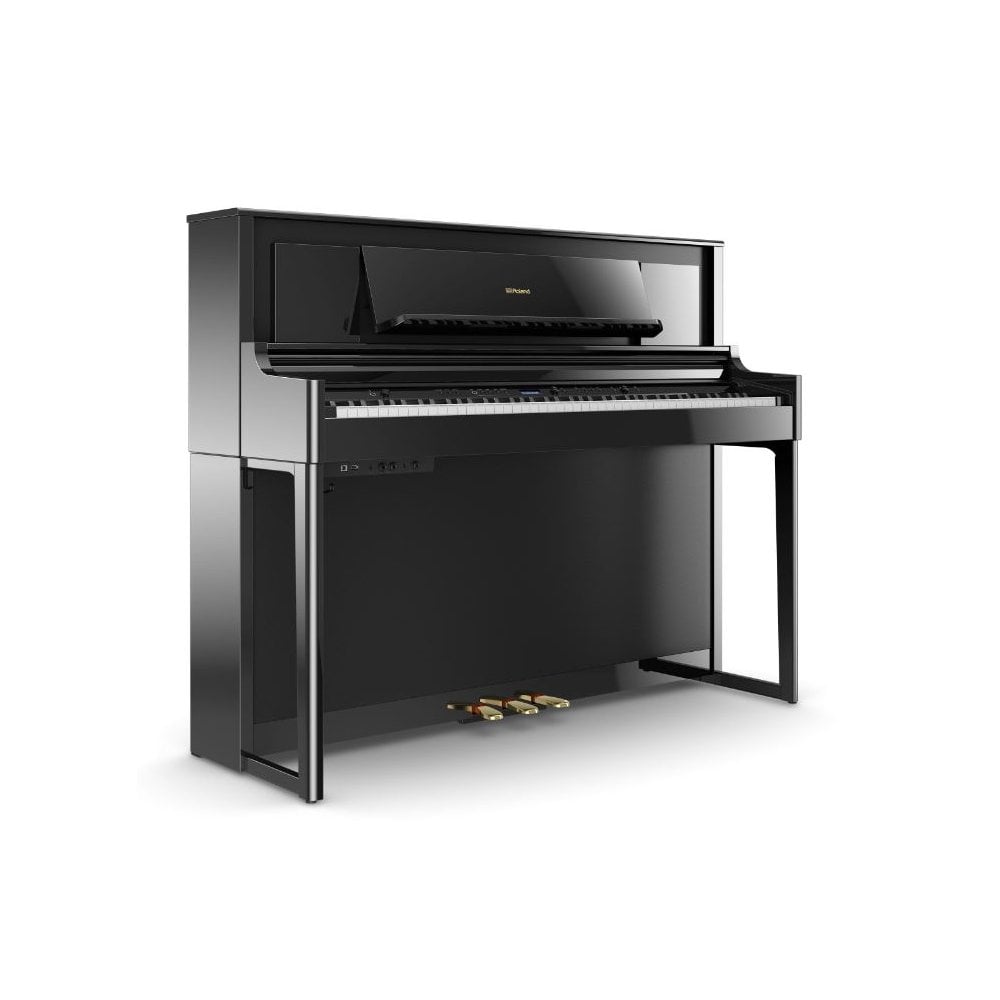
Roland LX706 Digital Piano
Luxury digital piano featuring Roland’s PureAcoustic Piano Modelling, Grand Piano action keyboard and progressive damper pedal, plus a whopping 324 tones.
Casio GP310 Grand Hybrid Digital Piano
Casio’s latest home piano with enhanced AiR Grand sound technology, an upgraded speaker system and a responsive hammer action keyboard developed in collaboration with Bechstein.
The realistic feel is achieved via Yamaha's renowned GrandTouch keyboard, which features real wooden keys, each individually calibrated to simulate a different weight and return, recreating the authentic feel of an acoustic piano. The excellent sound is delivered by an array of downward-firing speakers with 3-way transducers arranged on the underside of the keyboard.
The most remarkable thing about this piano is that, when you're sat playing it, it doesn't feel electronic. The sound from the speakers hidden in the casing is so realistic, and the ambience recreated so naturally that when you combine it with the authentically engineered keyboard action and the psychoacoustic trickery delivered by the combination of electronics and a real wood cabinet, the overall effect is an experience that's very hard to distinguish from the real thing. Like an acoustic, you feel totally enclosed in the sound and incredibly involved in the playing experience to the point where you forget that you’re playing a digital instrument at all.
There are two main grand piano sounds on the CLP-775, both of which are superb. The default Yamaha grand sample is taken from a CFX Concert Grand and is of impeccable quality. The sympathetic resonance, full bright tone and delicate ambience are all present and correct thanks to a technology that Yamaha calls Virtual Resonance Modelling. This simulates the sympathetic sounds created by the overlapping resonance of the strings, soundboard and body of a grand piano, and appears to work brilliantly.
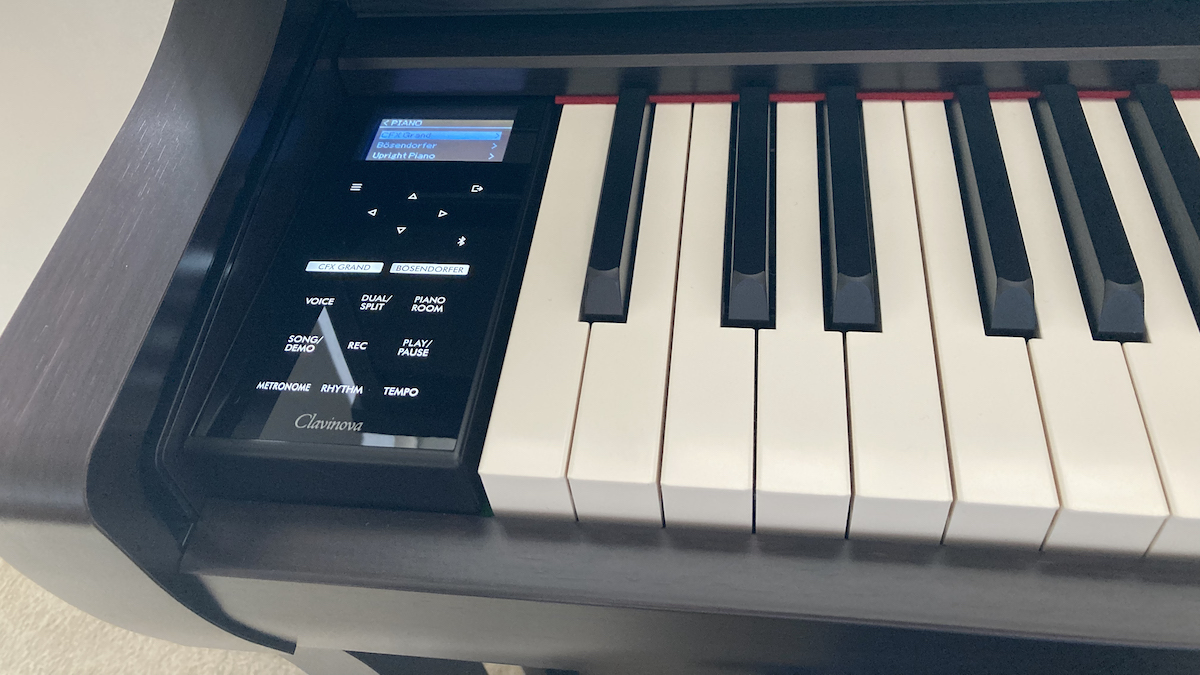
The second tone, sampled from a Bosendorfer Imperial grand, is less bright, rounder and warmer with a somewhat boxier tone overall. Both of these sounds get their own dedicated call-up buttons on the control panel, so you can choose between having a Yamaha or a Bosendorfer in your living room at the touch of a button. The samples are also recorded binaurally, giving them an extra realistic dimension when used with headphones. When we tried it, the binaural effect was of such high quality that we didn’t initially believe that the sound was appearing in our cans, and had to take them off momentarily to check (upgrade your cans with our pick of the best digital piano headphones).
For an instrument which is clearly intended as a high-end home piano, we were struck by the number of different voices available. Besides the two main piano tones, there are upright, jazz, rock and honky-tonk pianos, electric pianos such as Rhodes, Wurli and DX7 E-piano tones. In a unique twist, there are two pianoforte sounds on board, which are sampled versions of the early pianos that the likes of Mozart and Chopin would have used to compose on. The idea is to be able to play pieces from this period and hear them as they would have originally sounded at the time. These tones are an interesting addition and are very well executed - not that we're experts in exactly how they ought to sound, but they certainly bring an as-yet unheard dimension to the instrument that you won't readily find elsewhere.
Meanwhile, further down the sound list you'll find organs, strings, acoustic and electric basses, a vibraphone and a cracking pair of harpsichord sounds that are wonderful for playing Bach and other baroque pieces. There's even a selection of 20 pre-programmed rhythm tracks to play along to, along with auto bass parts and intro and outro fills, but we found these a bit home organ-like for our tastes and - somewhat snobbily, we confess - felt that these were a bit beneath the instrument's raison-d'etre, although to be fair, they can be a bit more exciting to practise scales to than the built-in metronome.

The demo songs are very nicely executed, and firing off one or two of these is pretty entertaining in its own right - you can have the piano play you some tunes while you dust the living room, say, or just use them as a way to show off your new instrument without revealing your own dubious talents. An onboard USB audio player/recorder gives you the ability to record your performance to uncompressed .WAV format, allowing you to share your music with friends & family.
The 775 is equipped with Bluetooth functionality, enabling it to be hooked up wirelessly to things like online piano lesson services and teaching apps, as well as Yamaha's own SmartPianist app, which allows sound selection and control of other piano parameters and settings directly from your device. You can also pair the piano with a Bluetooth-equipped mobile device and use its speakers for listening and playing along to songs from your mobile device’s music library.
To sum up, the CLP-775 is a gorgeous instrument that not only looks great - particularly in the rosewood finish - but sounds phenomenal too. Having a piano that's as much a piece of furniture as it is an instrument contributes a lot to the authenticity of the playing experience. There's not one whiff of digital-ness about the sound, and the CFX grand sample in particular is one of the best we've come across. It would be worth the price for the piano sounds alone, but all of the extra features like Bluetooth, the excellent electric piano and harpsichord sounds - even the slightly cheesy rhythm tracks - make it a package that's hard to overlook. If you're in the market for a high-quality, great-sounding Yamaha digital piano for the home that's as close as you can get to the feel of an acoustic grand, we'd recommend the CLP-775 in a heartbeat. Our only real question remains - do we absolutely have to give it back?
Yamaha Clavinova CLP-775 review: Hands-on demos
Alamo Music Center
Ruggero Piano
Yamaha-Global
Yamaha Clavinova CLP-775 review: Specification
- Keys: GrandTouch keyboard with 88 individually weighted, linear graded hammer action keys with synthetic ebony and ivory keytops, wood is used for the white keys
- Weight: 74kg
- Dimensions (W x D x H)mm: 1466 x 465 x 970
- Speakers: (16cm + 8cm + 5cm + transducer) x 2
- Pedals: Grand Piano Response Damper, Sostenuto, Soft
- Connections: 2 x 6.3mm headphone outputs, USB to host, USB device connector, Bluetooth audio and MIDI
- Tones: 38
- Rhythms: 20
- Polyphony: 256
- Contact: Yamaha
Dave has been making music with computers since 1988 and his engineering, programming and keyboard-playing has featured on recordings by artists including George Michael, Kylie and Gary Barlow. A music technology writer since 2007, he’s Computer Music’s long-serving songwriting and music theory columnist, iCreate magazine’s resident Logic Pro expert and a regular contributor to MusicRadar and Attack Magazine. He also lectures on synthesis at Leeds Conservatoire of Music and is the author of Avid Pro Tools Basics.

